longleaf map
Do you have any thoughts on this post?
Restoring longleaf pine forests improves wildlife habitat and drought resilience in the Southeast
Longleaf pine trees once dominated large swaths of the country’s landscape, covering more than 90 million acres—or roughly the area of Montana—from Virginia to eastern Texas. But this all began to change around the beginning of the 20th century, when longleaf pine was found to be excellent building material for ships and railroads. By the 1920s, most of these trees were gone, and many foresters replaced them with other types of pine that were thought to grow faster and offer a quicker return on investment.
Today, only 3.4 million acres of longleaf forests remain, and much of this is spread sparsely across the Southeast. This poses some serious challenges for game species and communities that are at risk of extreme weather events.
Here’s why.
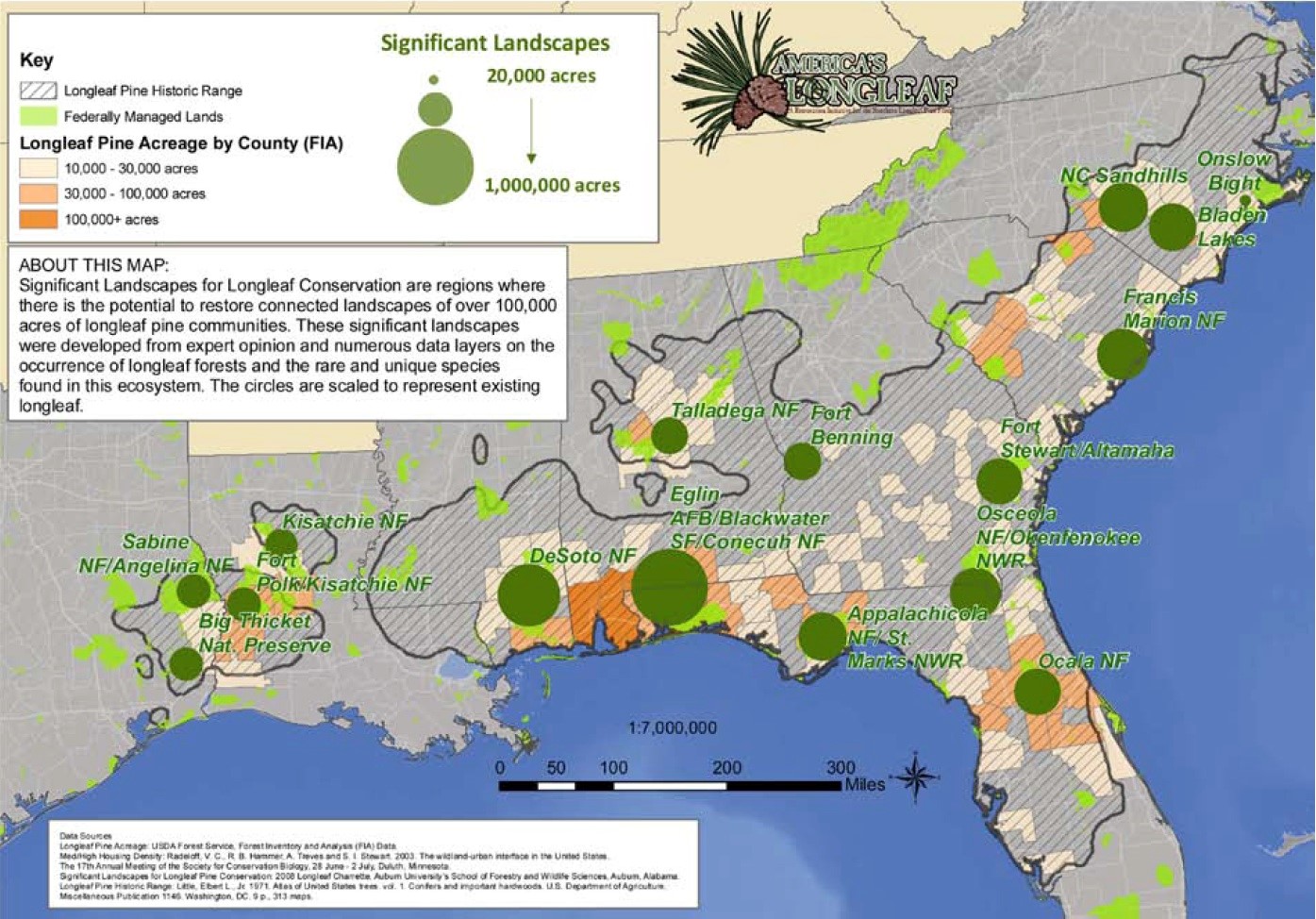
With the potential to support roughly 100 types of birds, dozens of species of mammals, and nearly 200 kinds of reptiles and amphibians, longleaf pine forests are some of the most diverse ecosystems in North America. Sportsmen and women know them best as critical habitat for bobwhite quail, wild turkeys, and whitetail deer.
Longleaf, even as a seedling, is highly resistant to wildfire, and its wide-set leaves create a more open forest canopy so more sunlight can reach plant life on the ground. With a little help from strategic prescribed burning, longleaf forests can have incredibly healthy underbrush with native grasses and vegetation that offer food and shelter for wildlife.
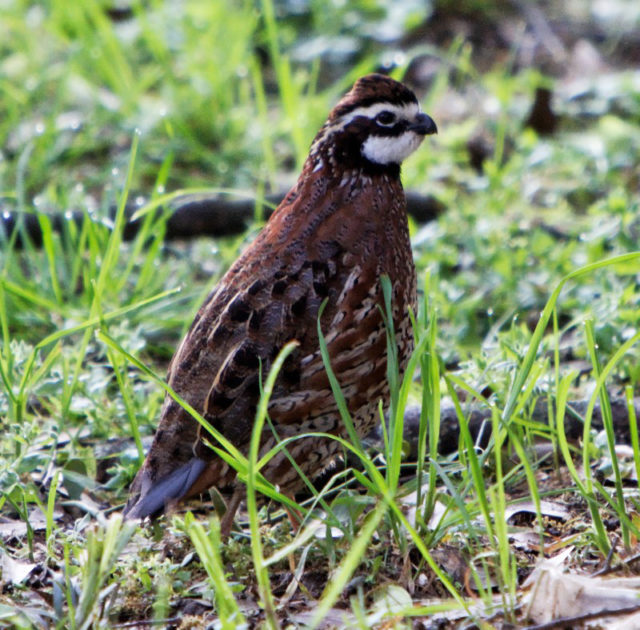
But we need longleaf pines for more than just great habitat—they are master adapters that can survive the harshest weather events and a wide range of climates. A study conducted after Hurricane Katrina found that longleaf pine trees were better able to withstand hurricane winds than other types of pine trees. More storm resilience means less costly damage to wildlife habitat and forestry businesses.
As if that wasn’t enough, these trees are also more resilient to drought, can better withstand pests and most diseases, and store carbon more effectively than other pine species. All of this makes longleaf a win for our critters and for communities that face major storms and drought.
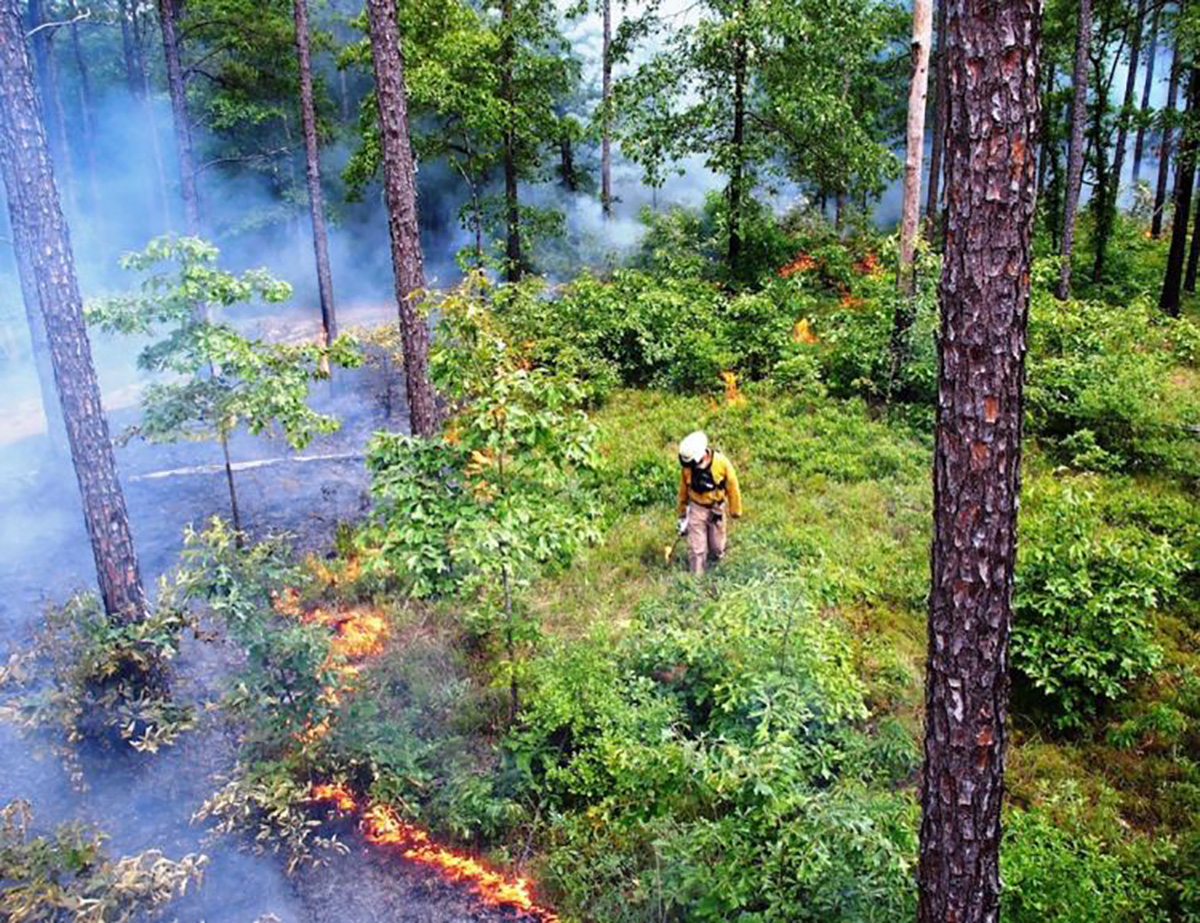
Unfortunately, the U.S. Department of Agriculture estimates that by 2060 the South will lose up to 67,000 square miles of forest to development and other habitat challenges.
But there is hope. The federal agencies that carry out conservation in America, along with dozens of non-governmental partners—including key TRCP allies, such as the National Wildlife Turkey Federation, The Nature Conservancy, and National Wildlife Federation—have joined forces on the “Million Acre Challenge” to add one million acres of longleaf pine to public lands in the coming years. This would go a long way toward helping the Forest Service complete its goal of putting 8 million total acres of longleaf pine habitat on the landscape by 2025.
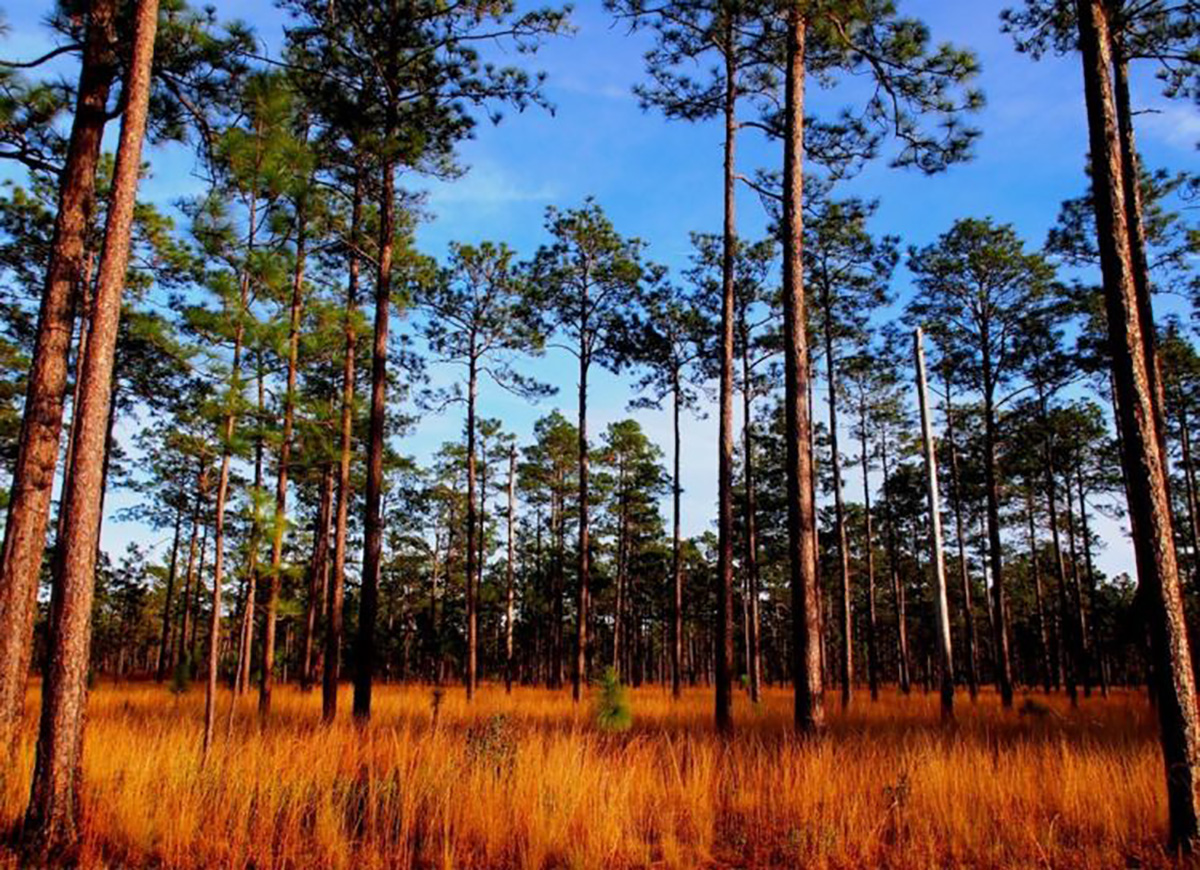
Recent passage of the 2018 Farm Bill could help, too. Programs such as the Regional Conservation Partnership Program, Environmental Quality Incentives Program, and the Conservation Stewardship Program help to coordinate landscape-scale conservation projects and reduce the cost for private landowners to restore or enhance their longleaf pine forests. With more than $5 billion in conservation funding to support private land efforts, the Farm Bill is a big win for habitat, but we also need strong funding for the Forest Service and Fish and Wildlife Service to help take on forest restoration.
The TRCP is committed to ensuring that the federal agencies have what they need to maintain and enhance our forests across public and private lands. And a powerhouse habitat-creator and wildfire-defender like longleaf pine is a great way to invest those dollars. It’s a critical down payment on the future of hunting and fishing in the Southeast.
Top photo by Andy Wraithmell/FWC. Quail by flickr user leshoward.
Restoring vegetation on the Gulf coastline is helping to improve your chance of landing bigger trout and redfish
Freshwater anglers have long understood that finding grass means finding the bass.
In the last decade, saltwater fishermen in Louisiana have begun to understand that it’s not just largemouth bass that love to live, lurk, and feed in submerged grass beds. Popular brackish-marsh dwellers, like speckled trout and redfish, utilize this subsurface vegetation, as well.
Throughout the late summer and into the spring, speckled trout cruise the edges of grass beds in marshes, coastal lakes, and bays eating shrimp, mullet, menhaden, crabs, and even bluegill, shad, and other freshwater forage. Juvenile trout spend much of their first few months in the grass, as well—eating and hiding from predators.
Redfish from two to 25 pounds live in and around the submerged vegetation, too, using clumps and pockets in the grass as ambush points. In fact, they are usually sharing these same dents and pockets with largemouths.
Few things in angling match the excitement of a 10-pound redfish demolishing a topwater frog or a buzzbait meant to lure a bass from a grassy shoreline.
In addition to the enormous benefits for sportfish, forage fish, and migrating waterfowl, submerged grasses help to break up wave action, filter out suspended sediment, and infuse dissolved oxygen into the water. This protects sensitive marshy shoreline while improving water quality.
Submerged grass beds had become scarce in many of the marshes of Southeast Louisiana in the 1980s and 90s.
Annual flooding of the Mississippi River had been largely cut off from coastal marshes by levees and canals—like the ill-fated Mississippi River Gulf Outlet (MRGO) in St Bernard Parish and the Barataria Waterway in Jefferson Parish—while hundreds of oil field canals were allowing saltwater to intrude deep into brackish and freshwater marshes and swamps.
The salt water killed off hundreds of thousands of acres of grass beds, along with large expanses of coastal oak and cypress forests, reducing the productivity of coastal fisheries, weakening already-loose marsh soils, and making coastal communities more vulnerable to the winds, waves, and storm surges from hurricanes and tropical storms.
This vulnerability was on full display during Hurricane Katrina, as storm surge flowed freely through the MRGO, across the degraded marshes and dead cypress swamps, and straight into the heart of New Orleans communities.
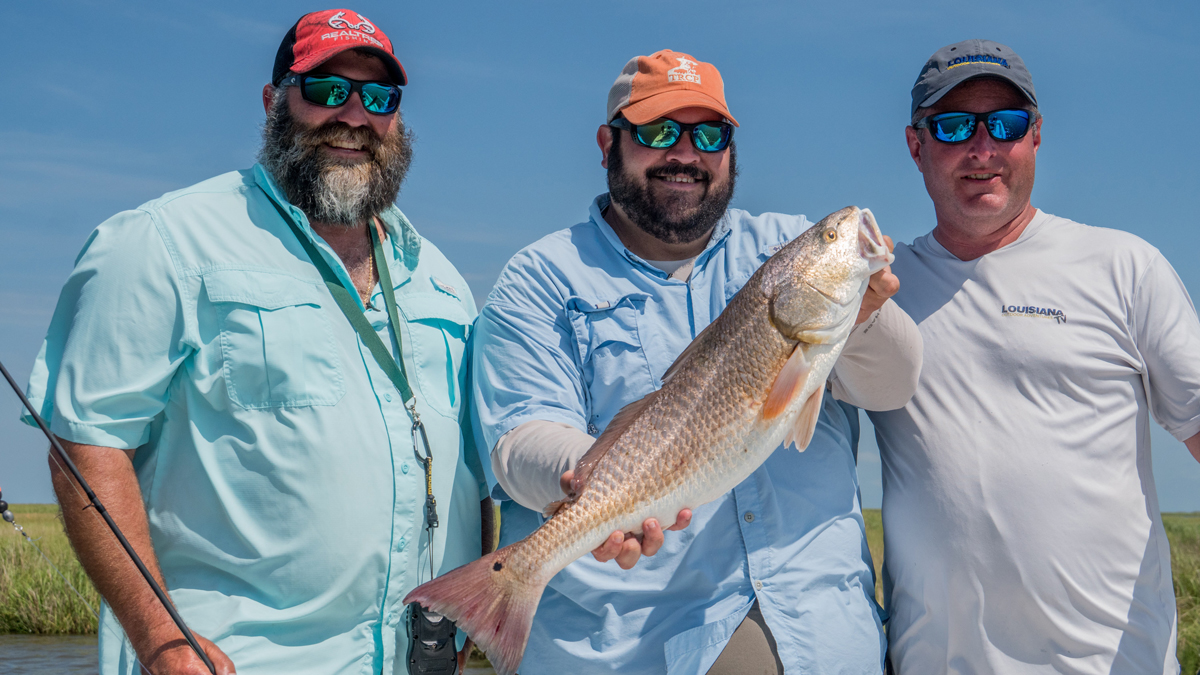
Fortunately, efforts over the last 20 years to restore Louisiana’s coast and control salinity levels have facilitated the return of submerged grass beds, especially in the marshes east of the Mississippi River and around Lake Pontchartrain. Marshes that held a few redfish and some seasonal speckled trout have become incredibly productive bass fisheries, while still offering excellent opportunities to catch speckled trout from early fall until the early spring and to land trophy reds year round. Ducks have returned to some of those spots too.
Lower salinity levels have also provided an opportunity for Louisiana’s Coastal Protection and Restoration Authority and non-profit groups, like the Lake Pontchartrain Basin Foundation and America’s Wetland Foundation, to replant cypress trees to replace the ones killed by saltwater intrusion and timber harvest in the last century.
Louisiana’s ongoing efforts to divert sediment and freshwater from the Mississippi into coastal marshes and rebuild natural coastal barriers will go a long way toward allowing submerged vegetation to return—further improving fish and waterfowl habitat and protecting coastal communities.
Our fisheries will change, and so will the way we fish, as freshwater and sediment is reintroduced. But, as many Louisiana anglers have found out in the last two decades, it will be a change for the better.
To learn more, watch our video on the importance of vegetation to the health of Louisiana marshes.
To advocate for the construction of diversions to restore the Mississippi River Delta, please log on to www.coastal.la.gov.
Conservation challenges and opportunities are outlined in the organization’s Annual Report
The Theodore Roosevelt Conservation Partnership has unveiled its latest Annual Report, which highlights the organization’s work on behalf of healthy habitat, clean water, sportsmen’s access, and the outdoor recreation economy in 2018.
“As partisanship raged on, political pressures did not sway us from criticizing bad conservation policies or giving credit where it was due,” says Whit Fosburgh, TRCP’s president and CEO. “We also saw some of our major efforts to convene and lead the hunting and fishing community over the past five years come to fruition in a new Farm Bill, passage of the Modern Fish Act, and permanent reauthorization for the Land and Water Conservation Fund.”
The Annual Report outlines TRCP’s efforts, accomplishments, and future policy priorities related to:
“But we’re not resting on our laurels,” says Fosburgh. “Legislative wins mean nothing if programs are underfunded or if conservation agencies fail to implement policies in time to have an impact. The TRCP will continue working with decision-makers to see that bill passage or program authorization isn’t the last step—it is the start of a new era of conservation outcomes that help guarantee all Americans quality places to hunt and fish.”
When it comes to safeguarding the future of America’s hunting and fishing traditions, we can’t afford to be silent
You might think that to be nonpartisan in today’s deeply polarized political climate you’d have to avoid taking sides altogether. But hunters and anglers have no hope of creating conservation solutions if we sit out the tough fights.
Even as many groups slide into one camp or the other, the Theodore Roosevelt Conservation Partnership has stayed true to its principles, regardless of political pressures. This is outlined in our latest Annual Report, where we detail the bad conservation policy we criticized, the positive steps forward for habitat that we praised, and the major TRCP priorities we were able to see through in 2018.
For example, we worked across the aisle to achieve huge successes for wildlife, water quality, and hunting and fishing access in the Farm Bill. Our staff and partners secured long-overdue recognition for the value of recreational fishing and the need for critical updates to fisheries management in the Modern Fish Act. We exposed challenges with public land access, but we also offered meaningful solutions.
And, of course, we continued to do the hard, inglorious work of defending conservation, as plans to restore greater sage grouse habitat got a second look and Clean Water Act protections for headwaters and wetlands were put at risk.
The TRCP doesn’t toe a party line or take positions based on red or blue. And, no matter how daunting, we’ll never back away from an issue that threatens fish and wildlife—from our best big game down to the tiniest forage fish.
We remain true to the notion that conservation should never be partisan. That’s why we will continue to provide the forum to bring disparate sides together for the benefit of future generations of American outdoorsmen and women.
We’re glad to have you in our camp.
TRCP has partnered with Afuera Coffee Co. to further our commitment to conservation. $4 from each bag is donated to the TRCP, to help continue our efforts of safeguarding critical habitats, productive hunting grounds, and favorite fishing holes for future generations.
Learn More
Sign up below to help us guarantee all Americans quality places to hunt and fish. Become a TRCP member today.

For every $1 million invested in conservation efforts 17.4 jobs are created. As Congress drafts infrastructure legislation, let's urge lawmakers to put Americans back to work by building more resilient communities, restoring habitat, and sustainably managing our water resources.